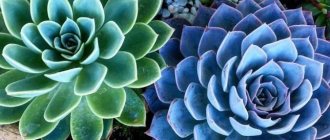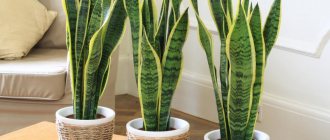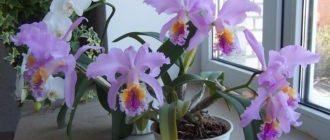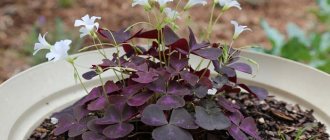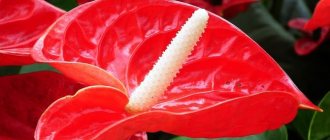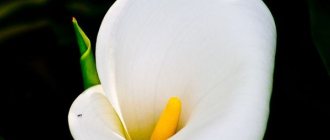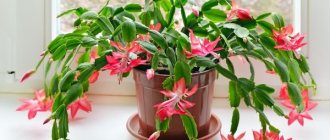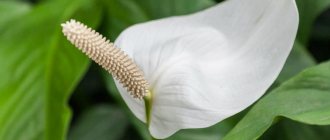In different parts of the world, people have always strived to create comfortable living conditions for themselves. Today, every apartment has televisions, washing machines, dishwashers, vacuum cleaners and other appliances. Which is ready to make life easier. In addition to practicality, people do not forget about the aesthetic side of the issue. Houseplants today, like hundreds of years ago, continue to decorate homes. Fuchsia is a beautiful perennial plant often chosen for home decor. There are many beliefs associated with them. Let's look at the signs and superstitions about the fuchsia flower.
Popular beliefs and observations
Fuchsia is not only an attractive houseplant, it is a real home talisman . It is believed that the flower is able to protect its owners from damage, the evil eye and other harm, and fill it with energy to overcome any difficulties.
- The flower is given to newlyweds for a strong relationship and strong family life.
- Fuchsia presented to new residents will help create a harmonious, comfortable and cozy atmosphere in the new place.
- For people with diseases of the thyroid gland, gastrointestinal tract, and mammary glands, the plant acts as a healer, causing the disease to recede as quickly as possible.
- The flower endows its owner with charm, femininity, and tenderness. If a woman carefully cares for the plant, she will never be left without the attention and care of the opposite sex.
Why does it bloom?
During the flowering period, the magical effects of fuchsia are especially effective.
- If the flower is covered with buds , this means successful implementation of plans and increased prosperity. A good time to start your own business and move up the career ladder.
- If fuchsia blooms in the house of a lonely person , in the near future he will meet his soulmate and have a relationship filled with mutual love and harmony. At the same time, the development of relations will be rapid and will soon lead to marriage.
- Blooming fuchsia helps resolve the most difficult issues, gives the owner the ability to find innovative solutions, and inspires discoveries and achievements in any field: creativity, science and medicine.
Why do you dream?
Dreaming of fuchsia is a sign that the dreamer is protected from envy, unkind thoughts addressed to him, the evil eye, damage and other negative magical influences.
If you dreamed of several flowers - to a successful course of affairs, the embodiment of conceived ideas and dreams into reality.
What properties are attributed to the flower?
Fuchsia is popularly called the “flower of happiness . This is due to the fact that in a house where fuchsia grows, household members have more creative energy, people think more creatively, become more cheerful, quarrel less and try to find the most favorable solution to the problems that have arisen.
In the long term, the flowering plant promotes the development of intuition and the gift of foresight.
Is it possible to keep the plant in the house?
Fuchsia in the house is a kind of talisman of well-being and success . It charges household members with positive energy, joy, love of life, drives out bad moods and irritation, thereby reducing the number of quarrels and conflicts.
The benefits of an indoor flower
The plant helps people find a common language, fills the atmosphere in the house with mutual understanding, support, and mutual respect.
Fuchsia is especially indispensable where a large family of several generations lives under one roof. The flower eliminates resentment and alienation, allowing everyone to feel needed and loved .
If the plant is in the house for a long time, its owners develop intuition, and in some cases, the gift of clairvoyance.
The owners of the flower recover strength more easily and quickly after heavy physical or psychological stress, and release accumulated negative energy. To do this, it is enough to be near the fuchsia even for a short time. In addition, the plant gives household members endurance and performance.
How can it be dangerous?
Sometimes there is an opinion that fuchsia is a widow's flower. It is also called widow's tears. Some particularly superstitious people believe that the plant drives men out of the house . However, there is no explanation on what this negative idea of the plant is based. Each gardener will have to decide for himself whether to have fuchsia at home or not. But most flower owners do not pay attention to this superstition, considering it false.
Origin: Brief History
This plant is popularly called ballerina. Her flowers really resemble the figure of a ballerina.
There is a very beautiful legend about this flower. It says that in the distant past there lived 7 sisters. They were very beautiful and distinguished by their dancing skills. When they danced, nature froze. A magician from another state heard about them. He decided to take one of the girls as his wife and the rest as concubines. The sisters refused. Out of anger, the magician turned them into an unusually beautiful flower, reminiscent of their dance.
The question of the date of origin of the flower is very controversial. It is generally accepted that the discovery of this plant belongs to a French priest . He went on a trip to South America. There, his attention was attracted by the original flowers, called Fuchsia Triphylla Flora Coccinea. He named them in honor of Leonard Fuchs, known in Germany as a doctor of medicine and botany. 1703 is the date of birth of fuchsia. The dried samples did not reach Europe. They died in a shipwreck.
There is another version of the origin of the plant. In 1689, there were 3 plants similar to this flower in the National History Museum in London. They got their name - fuchsia magellanica. In Europe, it began to be cultivated almost 100 years later.
Feng Shui meaning of a flower
Feng Shui experts, depending on the shape of fuchsia leaves, attribute it either to the male Yang energy (if the leaves are pointed) or to the female Yin energy (if the leaves are round).
In accordance with this, the correct selection of plants for the home will allow you to adjust the energy inside the home, directing the effect of the flower in the right direction.
But no matter what shape the leaves of fuchsia have, the flower will always help its owners avoid troubles and problems , fill them with vitality, energy and inspiration.
General description of the flower
Over a hundred species of this flower are known. They are distinguished from each other by color, leaves, size and shape of flowers, and flowering time. However, the structure of the flower is the same in all varieties and resembles a lantern.
They belong to the fireweed family . They are divided into two groups: bushy and tree-like.
Fuchsias are widely used in indoor floriculture; they are used for growing in open ground and vertical gardening. There are varieties intended for planting in open ground. In nature, some plants reach 1.5 m in height.
Common fuchsia varieties:
- shiny;
- hybrid;
- tree-like;
- graceful;
- corymbaceae;
- beautiful.
In home floriculture, hybrid fuchsia with beautiful double flowers is grown. With proper care it can grow for a long time.
Where is the best place to put it?
The best choice for placing a fuchsia pot is the north-west or north-east side of the apartment.
In order for harmony, trust, mutual understanding and warm relationships to reign in the house, the plant is placed where all family members most often gather , for example, in the living room or kitchen.
To attract good luck in love, fuchsia is placed in the bedroom, but at some distance from the bed.
Fuchsia attracts attention with its bright appearance. However, it is loved not only for its flowering. The plant can have a huge positive impact on the atmosphere in the house as a whole and on each family member individually.
Are the fruits of the plant edible?
At the end of flowering, round fruits are formed on the flower, sweet, with a slight astringency of taste . They are usually used for preparing fillings for pies, alcoholic beverages, making jam and confitures .
If you want something exotic, you can try making ice cream topping . For it, fuchsia fruits are rubbed with mulberries and powdered sugar is added, then placed on ice cream balls and served.
Bright fuchsia - signs and superstitions
There is a legend about an evil sorcerer who wanted to achieve the love of seven dancing sisters at once. The beauties refused to become concubines to the sorcerer, so he cursed them and turned all the girls into a single bush.
Features of the flower
Family happiness
It is unknown who and why called the fairytale bush “widow’s tears,” but esotericists do not see in it any threat to family happiness. On the contrary, the plant successfully smoothes out any rough edges in relationships - between spouses or representatives of different generations.
Single women
What about single women? Can they keep fuchsia at home? Without a doubt! Signs assure that such a “neighbor” will enhance the charm and attractiveness of any lady.
Flower of happiness or widow's tears? Signs and superstitions associated with fuchsia
Fuchsia is a beautiful exotic flower of the fireweed family. The plant's homeland is South America, from where the flower was brought to Europe in the 18th century. Flower growers love fuchsia for its elegance, lush flowering from April to mid-autumn and variety of types and colors.
There is a beautiful legend about the appearance of fuchsia; many signs and superstitions are associated with the flower. People call it a flower that brings happiness.
Features of reproduction
An ornamental crop can be propagated by seed , but when grown from seeds, fuchsia rarely retains the characteristics inherent in the original plant, so this method of propagation is more suitable for breeders. When propagating by seed, self-pollination of indoor fuchsia should be prevented by removing the anthers and applying pollen to the stigma of the pistil paternal culture, after which the flower is isolated using a special cover. After the fruit has ripened, the seeds are removed from it and dried a little, and then surface sowing is carried out on a moistened soil substrate in a mini-greenhouse. After a couple of months, the seedlings are picked , and after another three months, the grown plants are planted in separate flower pots.
Most often, fuchsia propagates vegetatively , and the most reliable option for such propagation is cuttings. Despite the fact that indoor fuchsia reproduces quite well at any time of the year, it is best to carry out this activity in the spring, using young, not yet lignified cuttings 10-20 cm long. All foliage from the bottom of the prepared cuttings should be removed. Rooting of cuttings is carried out in filtered water with a polyethylene cover. If the technology is followed, the roots are formed in about a week to a week and a half, after which the rooted cuttings are planted in a nutritious soil substrate. Rooting directly in the ground is also allowed, but this method is less practical.
Flower of happiness or widow's tears? Signs and superstitions associated with fuchsia
Fuchsia is a beautiful exotic flower from the cypress family. The plant originates from South America, from where it was introduced to Europe in the 18th century. Gardeners love fuchsia for its elegance, stunning blooms from April to mid-autumn, and variety of species and colors.
There is a beautiful legend about the appearance of fuchsia; many superstitions and beliefs are associated with this flower. People call it the flower that brings good luck.
Contents Folk beliefs and observations Why does it bloom? Why is he dreaming? Can I keep the plant at home? What are the benefits of home flowers? What could be dangerous? The meaning of a flower according to Feng Shui Where to put it?
What does Feng Shui say?
Fuchsia is also appreciated by feng shui experts . Based on the shape of the leaves, they attribute it to Yang energy (pointed indicates the predominance of male energy) or Yin (rounded refers to female energy).
As a rule, soft female flowers are creeping, while energetic male flowers rush upward. By choosing the shape and external size of fuchsia, you can adjust the energy of the living space, which is very important when difficult events happen in the family.
Advice! A little attention, good care at home, and not only beauty will reign in your home, but also peace of emotions, harmony in all areas.
By planting a “ballerina” in your apartment, you can not only decorate your home, but also prevent problems and troubles. Become healthier, fill with energy and enhance your creativity.
Subscribe to our Social networks
How to grow at home?
You can grow fuchsia at home from seeds. They are placed immediately in a container with specially prepared soil or in a peat tablet. Shoots appear in 20-30 days. After a pair of true leaves appear, the seedlings are transplanted into separate pots. During the period of growing up, it is necessary to regularly remove the top, that is, pinching. This will help form the bush. This fuchsia should bloom in the second year.
Tip : The soil for growing fuchsias from seeds should be slightly moist, but not wet.
Diseases
These flowers get sick relatively rarely. But gross mistakes made during care can cause illness. The florist needs to know about this.
There are two categories of diseases:
- diseases caused by improper care;
- cases of flower damage by fungi and pests.
Improper overwatering leads to root rot . The solution to the problem is to wash the roots with warm water and cut off the rotten part. Then the fuchsia is placed in a bowl with clean water, and after new roots appear, it is planted in a pot with new soil.
Sometimes growth slows down due to the fact that the plant needs to be transplanted into a larger container.
Paying attention to the leaves, you can judge the lack of essential nutrients . Small brown spots appeared on the leaves - a lack of molybdenum. Manganese deficiency can be indicated by yellow veins on the leaves. Their pallor and lethargy will indicate a lack of nitrogen.
Whitefly is a small, almost invisible butterfly that lays eggs on the underside of leaves. Sticky sugary droplets appear on them. The hatched butterflies begin to suck the juice from the leaves. The result is their yellowing and falling off.
Immediately after identifying the first signs of the appearance of whiteflies, you should prepare warm water with laundry soap and wash the stems and lower parts of the leaves. The root system needs to be protected from soap. This can be achieved using polyethylene film. If this method does not help, then you need to use Fitoverm, Aktara, Actellik, strictly following the instructions.
The presence of warm and dry air in the room contributes to the appearance of spider mites . The appearance of a gray coating on the leaves, thin cobwebs and a large number of black dots are the main symptoms of infection. Bath procedures do not always help get rid of insects. They resort to treatment with Fitoverm, Fufanon.
From all that has been said, the conclusion is: fuchsia is a very beautiful and useful plant in a house with an interesting history. Even a novice gardener can cope with its cultivation.
If you find an error, please select a piece of text and press Ctrl+Enter.
Flower growers' homes contain a large number of beautiful and inspiring plants.
Every housewife thinks about replenishing her greenhouse with Fuchsia, a flower belonging to the Fireweed family.
The birthplace of the perennial plant is considered to be Central and South America, as well as New Zealand.
At home they are used to decorate the room.
FAQ
There are many questions related to fuchsia. They concern not only its growing conditions, but also its usefulness, magical properties, signs and superstitions.
Can it be kept in the room?
This flower strengthens the aura of our home. When moving to a new place of residence, you should take it with you to create your own microclimate. Fuchsia helps create a favorable aura, strengthens the energy of the home and does not allow foreign energy to penetrate into it.
It is recommended to install the plant in the part of the home where all family members are most often located.
Is it possible to eat the fruit?
Yes, the fruits are edible , they have a sweet, slightly tart taste. They are used to prepare filling for pies, liqueur, jam, and confitures. It is unlikely that you will be able to reap a rich harvest at home. And it’s quite possible to create a small dessert.
For example: you can make a delicious ice cream topping. To do this, take fuchsia and mulberry fruits, mash them, mix them with powdered sugar, mix and spread on ice cream.
The flowers are also suitable for consumption and used to decorate salads.
What symbols are associated with this plant?
Even those who do not believe in omens know about their existence and try to learn something new. What is known about this beautiful flower? Let's consider what properties are attributed to fuchsia :
it awakens creativity in a person and adds cheerfulness;- creative energy emanates from her, next to her a person begins to think in a new way, passivity recedes;
- helps to find ways out of emerging problems and solve complex problems in the most extraordinary ways;
- promotes the development of intuition;
- harmonizes the energy of the surrounding space;
- in a house with fuchsia, parents quickly find mutual understanding in their relationships with children;
- as a token of gratitude for the care and care provided, she will reward the hostess with charm and irresistibility;
- is a source of health for people suffering from diseases of the digestive system, thyroid and mammary glands.
How to plant fuchsia seeds (video)
To obtain abundant and long-lasting flowering, it is very important to ensure proper care of the ornamental crop during the dormant period, after the onset of the first hard frost. At this time, it is advisable to reduce watering and completely eliminate spraying of the above-ground parts of the plant. If the temperature in the wintering room is too high, the plant will shed its leaves and the branches will stretch out quite strongly. In this case, in early spring you need to trim all bare stems and carry out high-quality fertilizing with complex fertilizers.
What is sick?
A healthy plant has leaves that are rich and healthy in color. If fuchsia sheds its leaves, they dry out and become stained - then this is a sure sign of disease. Take a closer look at the plant and it will tell you what the cause of the disease is.
- Powdery spots. A sign of powdery mildew, which appears when there is excess moisture. For disease, the plant is treated with Topaz and Fundazol.
- Dryness and yellowness. If the leaves dry out, this indicates chlorosis. To combat the disease, watering with a manganese solution is used.
- Brown spots. The rusty areas are removed, and then the plant is sprayed with Bordeaux mixture.
If you know how to care for fuchsia during flowering and follow all the growing rules, your home greenhouse will be decorated with an incredible flower, which is popularly called “gypsy earrings.”
Source
Landing rules
To grow a highly decorative indoor plant, you must follow all planting rules. The nutrient substrate for growing fuchsia should be slightly acidic. Both ready-made soils and those made independently from three parts of leaf soil, two parts of fibrous peat substrate and one part of medium-grained sand are suitable. It is mandatory to fill the flower pot with drainage in the form of crushed brick chips , small pebbles or expanded clay. The growth and development of fuchsia is extremely negatively affected by overheating of the soil, so it is recommended to use ceramic flower pots or clay flowerpots and flowerpots for planting.
Plant care
Having bought Fuchsia, it needs to be quarantined for a while. After the plant gets used to its new home, it is advisable to replant it.
Fuchsia does not like heat. Optimal conditions are 20 – 25 degrees. If the apartment is too hot, the room needs to be ventilated and the flower needs to be sprayed.
IMPORTANT! In winter, ventilation must be carried out carefully, since the Ballerina cannot tolerate drafts.
The flower loves light, but can only tolerate direct rays of the sun on a balcony or veranda. Where the wind can cool the leaves.
In winter, the plant needs rest. At this time of year, the flower pot is transferred to a cool room, dry leaves and branches are cut off. Watering is carried out very rarely. Approximately once a month.
In the spring, transplanting and pinching are carried out.
Fuchsia blooms in summer. At this time, Ballerina needs to be regularly watered and fed.
More information in our article “How to care for Fuchsia at home: all the subtleties of growing.”

